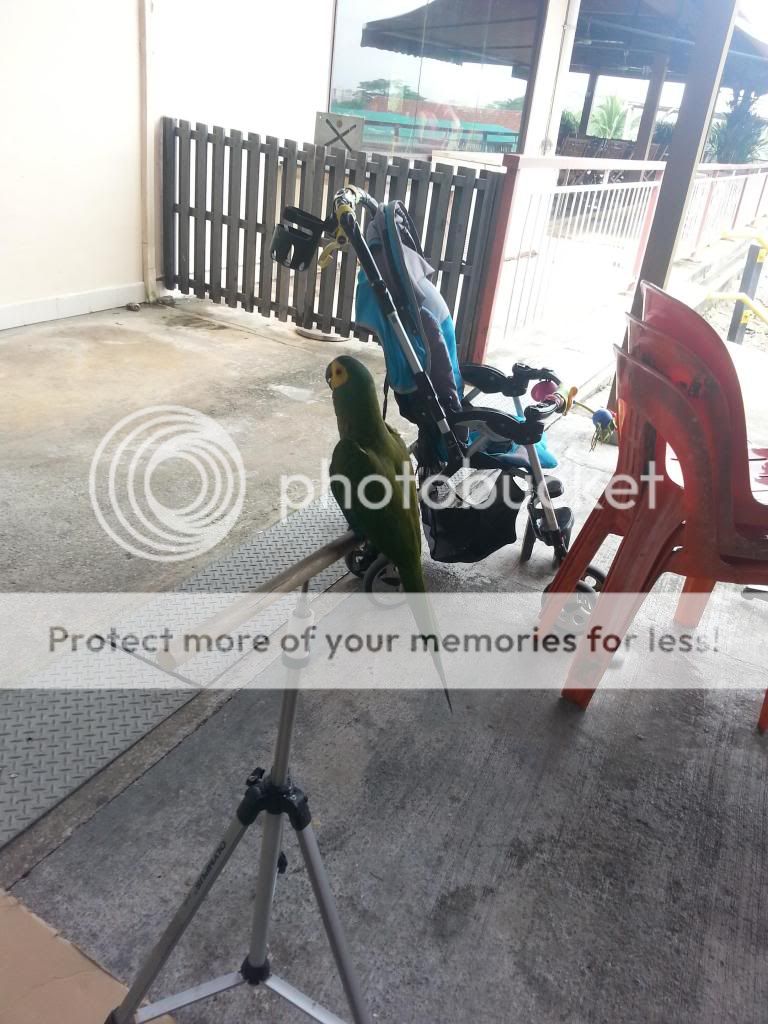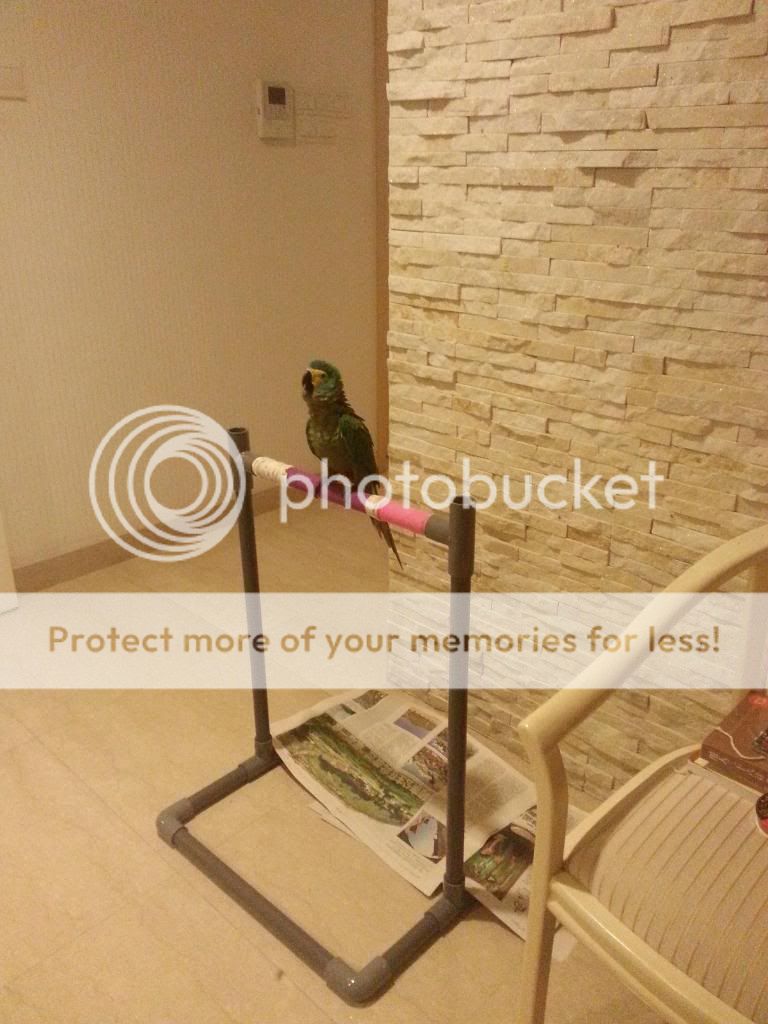i've had two RBM's which are very very very scared of people for about 3months…they're so scared to the point that they don't even perch in the cage, opting to cling on the sides. just this weekend, i decided to find a parrot trainer to see if they could be tamed.
unfortunately, the felluh wasn't in when i went down. but i met another person that told me he could help me with the taming. and TADAH 3 hours later the RBM could perch on a stand without scampering off!!

but of course the parrot still needs a lot of work and it'll take some time before he's completely okay.

the method for taming however…is i'll admit not very kind. there's no violence involved of course! but basically we towelled the bird and petted it for about 1hour. then after that force the bird to perch[that part aint easy at all], every time he escapes the perch we put him back up until he gets the idea to stay there. after he gets used to the perching we could slowly pet it and pick it up.
while some people may not agree with this method, i felt that in such situations …being cruel was kinder. i've already spent the previous 3months sitting next to their cage talking to them, taking it easy but met with no progress. i felt that if we didn't do that then he'd probably be scared for the rest of his life. i'd rather he be scared for 3hours than 3years!!!
this probably wouldn't work for aggressive parrots though, just the scared ones.
sorry for the long post!but i felt that i had to share as i've never seen him this calm in the entire time i had him. if anyone else was like me, at their wits end~ then maybe giving this method a go would help!
unfortunately, the felluh wasn't in when i went down. but i met another person that told me he could help me with the taming. and TADAH 3 hours later the RBM could perch on a stand without scampering off!!

but of course the parrot still needs a lot of work and it'll take some time before he's completely okay.

the method for taming however…is i'll admit not very kind. there's no violence involved of course! but basically we towelled the bird and petted it for about 1hour. then after that force the bird to perch[that part aint easy at all], every time he escapes the perch we put him back up until he gets the idea to stay there. after he gets used to the perching we could slowly pet it and pick it up.
while some people may not agree with this method, i felt that in such situations …being cruel was kinder. i've already spent the previous 3months sitting next to their cage talking to them, taking it easy but met with no progress. i felt that if we didn't do that then he'd probably be scared for the rest of his life. i'd rather he be scared for 3hours than 3years!!!
this probably wouldn't work for aggressive parrots though, just the scared ones.
sorry for the long post!but i felt that i had to share as i've never seen him this calm in the entire time i had him. if anyone else was like me, at their wits end~ then maybe giving this method a go would help!
